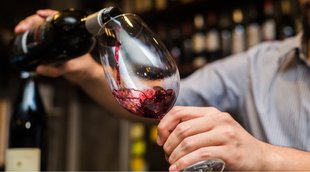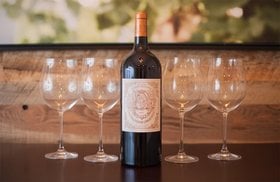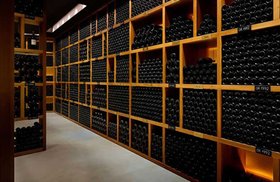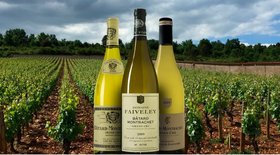Red Wine (Varietals, Prices, Best Wines to Buy in 2025)
Keen to learn more about red wines, and buy some of the best ones for your collection?
When it comes to red wine, you’ll come across a dazzling array of classic grape varieties to choose from - each tasting different depending on its maker and the region it comes from.
But how do you choose the best red wine to buy?
Which ones are meant for early drinking, and which bottle can be stored in Your Wine Cellar as a long term investment?
Most importantly, what’s the Easiest Way To Buy Them?
In this article, we’ll explore the different facets of red wine, including the major types of red wine and how red wine is made.
We’ll also show you the smartest way to buy some of the world’s Best Red Wines!
Further reading
- Check out other coveted wines like a Dom Perignon!
- Also read about the Best Wine Brands You Should Try In 2023.
- Explore some of the Most Luscious Bordeaux Wines we picked for you.
What is Red Wine?

Red wine is an alcoholic beverage made from the fermented juice of dark-skinned grapes. There are many types of red wine, including Cabernet sauvignon, Pinot Noir, and Merlot, and they all vary in taste and color.
Let’s dive into the details.
What are Red Wine Characteristics?
Red wine has four primary characteristics - color, flavors, tannin levels, and acidity.
A. Red Wine Color
Red wine colors can vary from a deep, opaque purple to a soft, pale ruby. Its color changes with age, transitioning from bright, youthful shades of red to aged garnet or brown.
B. Red Wine Tannin levels
Ever noticed that drying sensation in your mouth when you taste some wines?
That’s due to the polyphenol in the tannins that come from the skins, seeds and stems of grapes. It's what gives red wine its texture, structure and age-ability.
Tannins soften as the wine ages. This is why young, tannic wines taste better when left to age in the bottle for a few years.
C. Red Wine Flavors
The different grapes used to make red wines produce a range of aromas and flavors of fruits, herbs, flowers, spices, and earthy elements.
These aren’t added to the wine - they come from the organic compounds in the acids and grape skins. For example, you’ll find notes of black cherry, raspberry, cedar and even tobacco from Merlot.
D. Red Wine Acidity
Acid is an essential component in wine that works as a preservative and gives it freshness and structure.
You’ll be able to detect the acidity in wine by how tart or sour it is, which counters the other sweet, bitter or tannic elements.
What are the Red Wine Types?
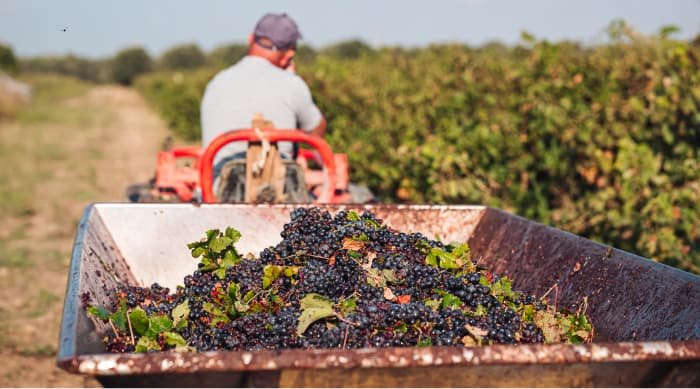
There are over 20 key red wine varietals that can be found in the world today. Here are some of the most popular red wine types.
1. Cabernet Sauvignon
Cabernet Sauvignon is the most planted grape in the world. It's the primary grape of the Napa Valley and the main component of many Bordeaux wines.
Aging potential of Cabernet Sauvignon: ~10 to 50 years
Flavor profile of Cabernet Sauvignon: Cabernet Sauvignon is a dry, full-bodied wine with medium to strong tannins. The flavors can vary from fruity to smoky oak with notes of cherries, currants, bell pepper, dark berries, tobacco, vanilla and cedar.
2. Cabernet Franc
Cabernet Franc is more earthy and tannic compared to Cabernet Sauvignon. It’s one of the major components of the Bordeaux blend red wines, with Cabernet Sauvignon and Merlot.
Aging potential of Cabernet Franc: ~5 to 15 years
Flavor profile of Cabernet Franc: Cabernet Franc often features pure notes of violets, blueberry, black olive, fresh roasted coffee and earth.
3. Gamay
Gamay is the grape of Beaujolais (a French Appellation) and usually produces early drinking wines. Young Gamay, made by carbonic maceration, like Beaujolais Nouveau, can be slightly effervescent with the scent of bananas.
Aging potential of Gamay: Up to 10 years
Flavor profile of Gamay: Gamay offers bright, tangy, fruity flavors of raspberry, strawberry and sweet cherries.
4. Grenache
Grenache goes into making some of the greatest wines of Spain and Australia. These red wine grapes are also used widely in France’s Châteauneuf du Pape, Gigondas and Côtes du Rhône.
Aging potential of Grenache: ~5 to 10 years
Flavor profile of Grenache: Grenache is bold, tending towards low acidity, high alcohol, and features spices and the fruitiness of cherry.
5. Merlot
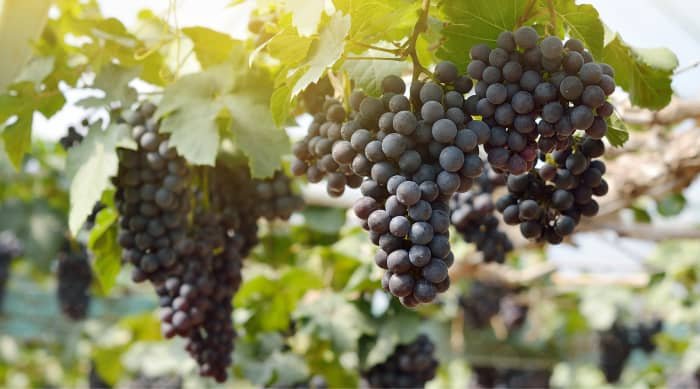
Merlot is the second-most planted wine grape after Cabernet Sauvignon and produces a deep, ruby-red wine. The best of it comes from Bordeaux, where vintages have great potential for aging. It’s great for a first-time wine drinker or even a white wine lover looking to try a red wine!
Aging potential of Merlot: ~5 to 50 years
Flavor profile of Merlot: Merlot is full-bodied with low acidity and tannins. Look for juicy flavors of plum, strawberry, raspberry, blackberry, black cherry watermelon and chocolate.
6. Zinfandel
Zinfandel is most widely grown in Sonoma County, California. This grape varietal is also cultivated in wine regions in the United States, Australia and Italy.
Aging potential of Zinfandel: ~3 to 5 years
Flavor profile of Zinfandel: Zinfandel typically features flavors of blackberry, raspberry, raisin, black cherry and prune. It tends towards a high level of alcohol content and medium to high tannins.
7. Syrah or Shiraz
Known as Syrah in France, its most complex expressions are shown in the vineyards of northern Rhone.
Aging potential of Syrah or Shiraz: ~5-50 years
Flavor profile of Syrah or Shiraz: Shiraz is a bold wine with spicy and peppery elements. It can feature rich fruits like blackberry, plum, boysenberry along with clove.
8. Malbec
Malbec is primarily produced in Argentina though it’s of French origin. It’s an easy-drinking wine of deep purple color that can age well in new oak barrels.
Aging potential of Malbec: ~5 to 15 years
Flavor profile of Malbec: Features rich, velvety fruit flavors of blackberry, blueberry, plum or sour cherry, with hints of smoke and spice.
9. Pinot Noir
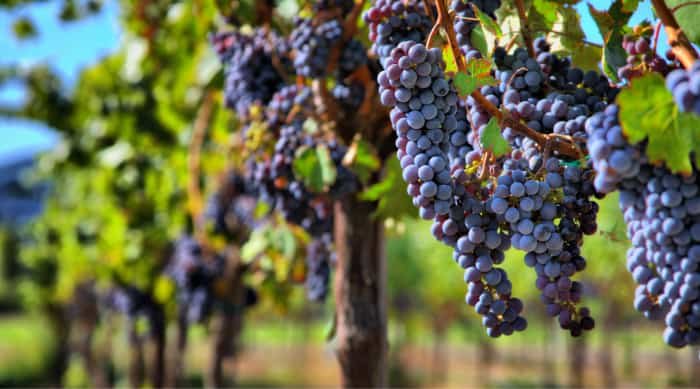
Pinot Noir is a grape varietal that winemakers find tough to cultivate because of its fragile skin and refusal to fully ripen when there’s insufficient sunshine. Because of its difficulty to grow, it is highly coveted by both winemakers and wine collectors alike.
Burgundy is the most well known region for Pinot Noir. It makes a delicate, aromatic wine and is a principal component of many sparkling wines.
However, in New Zealand, California, and the warmer sites of Oregon, Pinot Noir wines are surprisingly dense and jammy.
Aging potential of Pinot Noir: ~3 to 50+ years
Flavor profile of Pinot Noir: Pinot Noir is light and silky. It has the brightness of raspberry, with clove and floral notes. With age, its smoke and vanilla flavors became more prevalent.
10. Sangiovese
Sangiovese is Italy’s most popular red wine varietal. It’s the principal grape of Tuscany and is the main component of Chianti wine and Italy’s Super Tuscan.
Aging potential of Sangiovese: ~10 to 30 years
Flavor profile of Sangiovese: Features the flavors of pie cherry, tobacco leaf and anise, and will have vanilla and oak from the barrels it's aged in.
11. Nebbiolo
This light-colored wine has strong tannins and lots of acid. Nebbiolo is the principal grape of Barolo, Barbaresco and Gattinara, all produced in Italy’s Piedmont region, and is difficult to grow elsewhere.
Aging potential: ~10 to 50 years
Flavor profile: Nebbiolo features plum, tar and pie cherry flavors. It becomes much more complex and interesting with aging.
Besides these top varietals, you’ll also come across a bunch of other grapes from all over the world, including Tempranillo, Mourvèdre/Mataro, Lambrusco, and Barbera.
Now, let’s walk through the process of making red wine.
How is Red Wine Made?
Red wine is made from the pulp of black or red grapes that are fermented along with the grape skins to give the wine its color. In fact, red wine and white wine are made using similar winemaking processes - but with one major difference.
White wine is created by fermenting the juice from crushed grapes. In this case, the grape skins are taken off and no longer play a role.
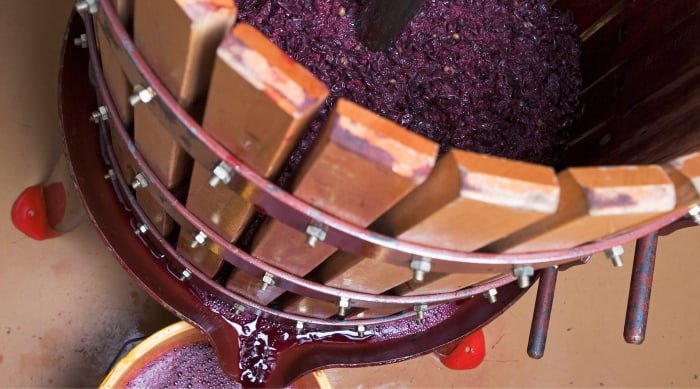
Here’s a quick look at the steps in red wine production.
1. Grape Harvesting and Processing
Grapes are harvested either by hand or using machinery, tipped into a bin, and delivered to the processing machinery. Some winemakers prefer to hand-pick the grapes to make sure they’re fully ripe.
2. Grape Crushing
Grapes are typically destemmed before crushing, though some winemakers prefer to leave them intact to add character to the wine.
Crushed grapes result in a mixture of skins, juice and seeds - this is called ‘must.’ The must is transferred to stainless steel or concrete tanks, or oak vats for fermentation.
3. Must Cooling
Some winemakers prefer to chill the must for one to four days for pre-fermentation maceration, also known as “cold soaking.”
Doing this extracts the color and flavors into the juices, minus the tannins. Tannins are only extracted in post-fermentation maceration when alcohol is present.
4. Fermentation
Yeast that’s naturally present on the grape skins converts the sugars in the must into ethanol (alcohol) and carbon dioxide.
5. Pressing
Grapes are pressed using a wine press or by hand to extract the juice.
In some regions that produce sparkling wine (like Champagne), the grape is pressed in whole-clusters with their stems to create a lighter must that’s low in phenolic compounds.
For red wine, pressing happens after or near the end of fermentation to allow time for the color, tannins and other phenolics to leech from the grape skin.
6. Malolactic Fermentation
Malolactic fermentation occurs when the malic acid in the grape juice converts to lactic acid.
7. Racking
After malolactic fermentation, red wine is racked to separate off its lees (the solids and dead yeast cells). A sulfur dioxide preservative is added to prevent oxidation and bacterial spoilage.
8. Aging
Red wine is typically aged in concrete or stainless-steel tanks, or oak barrels. Wine aged in oak barrels will pick up some of the oak flavors.
Aging periods can vary from a few days (like the Beaujolais Nouveau) up to 18 months or more (like Bordeaux reds.)
9. Fining and stabilization
Some red wines go through fining to clarify and fix faults like excess tannin. Some are cold-stabilized (especially those for early drinking) to avoid precipitation of tartrate crystals in the bottle.
10. Filtration and bottling
Most wines are filtered to make it clear and remove any residual yeast cells and bacteria (which could destabilize the wine).
The wine is then bottled in glass or plastic bottles, and sometimes even TetraPak.
Now:
On a special occasion, you might want to open your bottle of Zinfandel for a burst of freshness, or sip on the smooth darkness of your Shiraz.
But, is there a ritual to serving red wine, or do you just pour it into any glass?
And, is red wine consumption good for health?
Serving and Drinking Red Wine
Here’s how to best enjoy your wine:
How to serve red wine
Red wine should be served cool, with suggested temperatures of 53ºF to 69ºF. The lighter reds like Pinot Noir taste better on the cooler end of the spectrum.
So, if you fancy a sip of sangria, just soak some fresh fruit in your Pinot Noir, and let it stay at room temperature for two hours. Then, add ice cubes to your glass of sangria just before you serve it.
What glass do you serve red wine in?
Red wine tastes best when served in a large glass, with a round bowl and a wide opening. This helps soften the tannins or make spicy-tasting red wines more rounded. It also lets full-bodied reds breathe, releasing their aroma.
And, don’t forget the correct food pairings, as it can greatly enhance your dining experience!
What kind of food goes with red wine?
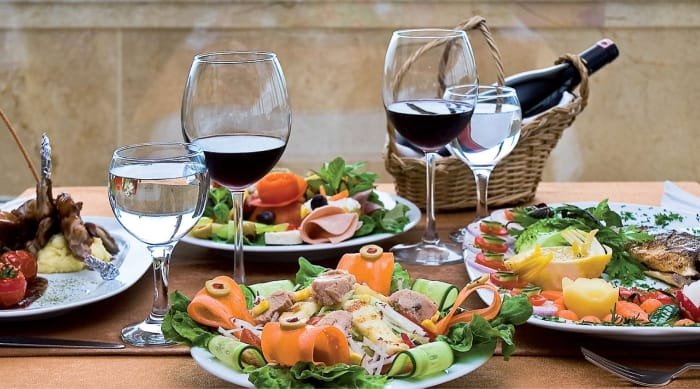
Red wines have a strong taste and are best paired with bold flavored foods like red meat. The common suggestion “Red Wine with Meat, and White Wine with Fish” works well in most cases, but there are exceptions too. For instance, full-bodied reds could mask the flavors of meat while Gamay and Pinot Noir wines enhance the flavors.
The best red-wine food pairings include:
- Cabernet Sauvignon:Rich meals like lamb, short rib or creamy pasta.
- Cabernet Franc:Roast chicken or grilled beef, duck, sausage, fish dishes and even cheese.
- Gamay:Pairs well with a wide array of foods, from roast chicken to beef stroganoff, cheese and vegetables.
- Grenache: Pairs well with grilled, stewed and braised meats like beef and chicken. It also works with the less spicy styles of Asian cooking.
- Merlot: Easily pairs with poultry like duck or chicken.
- Zinfandel: Pairs well with meats, pizza or pasta dishes.
- Syrah or Shiraz: Will enhance the subtle flavors in the cheese and meats in a charcuterie plate.
- Malbec: Works well with lean meats or spicy Mexican or Indian foods.
- Pinot Noir: Pairs well with most foods, including red meats, cheeses, duck, and even salmon.
- Sangiovese: Pizza and pasta.
- Nebbiolo: Gamey, fatty meats like goose, duck or pork shank.
Red wine nutrition facts
Too much alcohol is never advisable, but moderate red wine consumption may not be harmful.
Interestingly, one of the reasons attributed to the “French Paradox” is the higher consumption of red wine in France! (French paradox refers to the fact that despite consuming a fat-rich diet, French people have low levels of coronary artery disease, especially when compared with the British people.)
Is red wine good for health?
Some studies suggest that moderate consumption of red wines may help you live longer and prevent heart disease or other forms of cardiovascular disease.
The heart benefits or protective effect of red wine comes from its phenolic compounds. These polyphenolic compounds are antioxidants that can help preserve the lining of blood vessels or the arterial wall in your heart, and lower cholesterol and oxidative stress. Red wine polyphenol is also proven to decrease blood pressure.
Here’s a glance at the nutrition in red wine.
One glass of red wine (around 175 ml) contains:
- Calories: 153
- Fat (includes saturated fat, polyunsaturated and monounsaturated fat): 0 g
- Sodium: 7.2 mg
- Carbohydrates: 4.7 g
- Fiber: 0 g
- Sugars: 1.1 g
- Protein: 0.1 g
Is it Ok to drink red wine everyday?
Excessive alcohol consumption is never good for anyone! Moderate wine intake is defined as 1 to 2 glasses per day.
Instead of drinking alcohol or wine, you could even give de alcoholized red wine a shot!
Ready to discover some of the best red wines you can buy in 2023?
Best Red Wines You Should Buy in 2023 (Includes Price and Taste)
What is the best red wine to drink?
Here’s a selection of delicious red wines from different parts of the globe.
1. Screaming Eagle Cabernet Sauvignon 2006 (US)

Screaming Eagle is made in tiny quantities at a small, prestigious vineyard in Napa's Oakville appellation. This Cabernet Sauvignon is one of America's most expensive wines.
Taste: The 2006 vintage is pliant and sweet, with aromas of red berries, brown spices, minerals, menthol and tobacco leaf, with a very long end.
Average price of Screaming Eagle Cabernet Sauvignon 2006: $3,100+
2. DRC Romanee Conti 2015 (France)
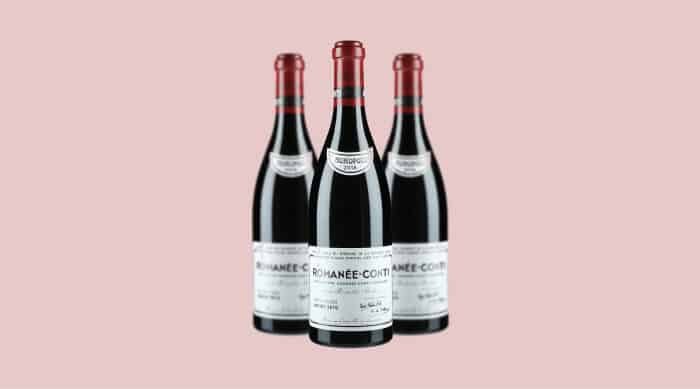
Domaine de la Romanée-Conti (DRC) of Burgundy produces some of the most collectible, but also least accessible, wines in the world. The Domaine produces wines from eight different grand cru vineyards spanning the Côte d'Or.
Taste: This intensely flavored 2015 vintage is distinctly creamy and harmonious. It features notes of succulent cherry, sandalwood, oak spice and cinnamon.
Average price of DRC Romanee Conti 2015: $21,000+
3. Penfolds Bin 389 Cabernet Shiraz 2017 (Australia)

The Penfolds estate in Australia is best known for its iconic Penfolds Grange wine. This Penfolds Bin 389 is a combo of Cabernet Sauvignon and Shiraz, and is often referred to as “Baby Grange.”
Taste: The 2017 vintage offers a nose of blackcurrant, cassis, chive, mustard spice, beeswax, lemon and honey tea. Its palate is rich, with flavors of charcuterie meats, pastrami, cranberry, vanilla and licorice.
Average price of Penfolds Bin 389 Cabernet Shiraz 2017: $60+
4. Achaval-Ferrer Quimera 2014 (Argentina)
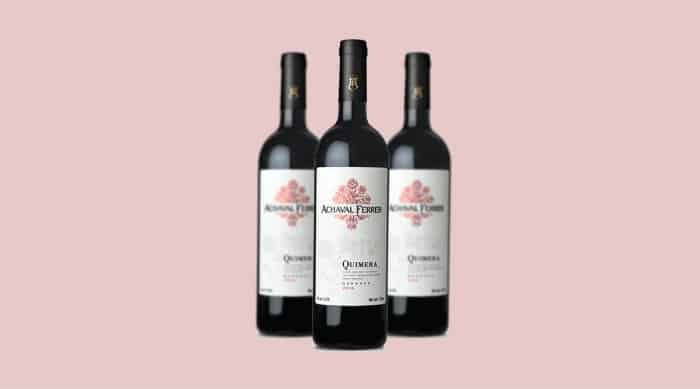
This Argentinian wine estate based in the Uco Valley, Mendoza is popular for its high-quality wines made mainly of Malbec (typically as a blend with other classic Bordeaux varietals.)
Taste: The 2014 vintage is intensely concentrated with blackberry fruits, salted dark chocolate, cedar spices along with vanilla and clove.
Average price of Achaval-Ferrer Quimera 2014: $30+
5. Vega Sicilia Unico 2009 (Spain)
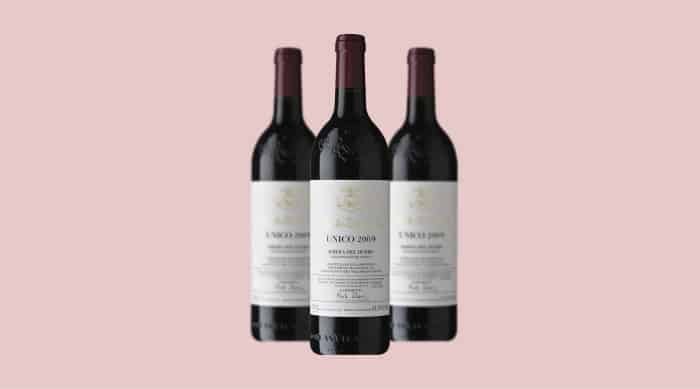
Vega Sicilia winery’s Ribera del Duero estate is known for its complex wines made primarily from Tempranillo. Unico, a Tempranillo and Cabernet Sauvignon red blend, is one of Spain’s most sought-after wines.
Taste: The 2009 vintage features beautiful flavors of ripe cherries and spiced plum, while the palate wavers between deep forest underbrush, muddled blueberries and cigar box.
Average price of Vega Sicilia Unico 2009: $300+
6. Château Lafite Rothschild, Pauillac 2018 (France)
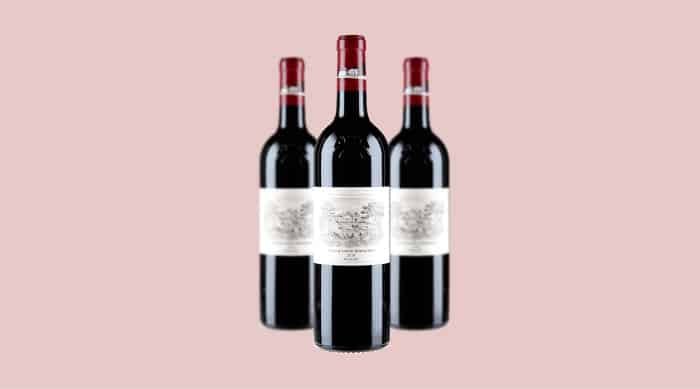
Château Lafite Rothschild is located in the Pauillac region of Medoc. The Lafite Rothschild is one of the most expensive and sought-after red wines in the world. It’s popular for its perfume, elegance and harmony, and the remarkable ability to age 50 years or more.
Taste: The 2018 vintage holds beautiful notes of creme de cassis, tobacco, cedar, graphite and lead pencil shavings. This is a balanced and full-bodied wine with flavors of dark fruity blackberries, licorice and spices.
Average price of Château Lafite Rothschild, Pauillac 2018: $700+
7. Gaja Barbaresco, Piedmont 2006 (Italy)
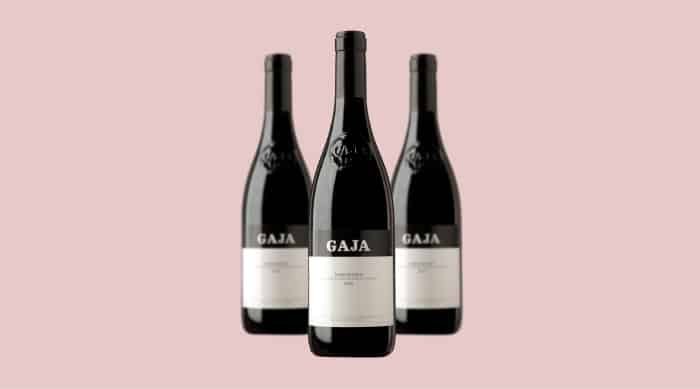
Gaja is located in Barbaresco, Piedmont, and is one of Italy’s most iconic winemakers. The wine estate is well-known for their Nebbiolo-based wines, like this Barbaresco, which is 100% Nebbiolo.
Taste: The 2006 Italian vintage has a bright, intense and ripe berry nose. Flavors are deep, rich, with notes of cherry liqueur, vanilla spice and leather. It has high alcohol, soft tannins and a long finish.
To read more about some of the best Barbaresco wines you can buy, read this informative article.
Average price Gaja Barbaresco, Piedmont 2006: $300+
8. Marchesi Antinori Solaia Toscana IGT 2015 (Italy)
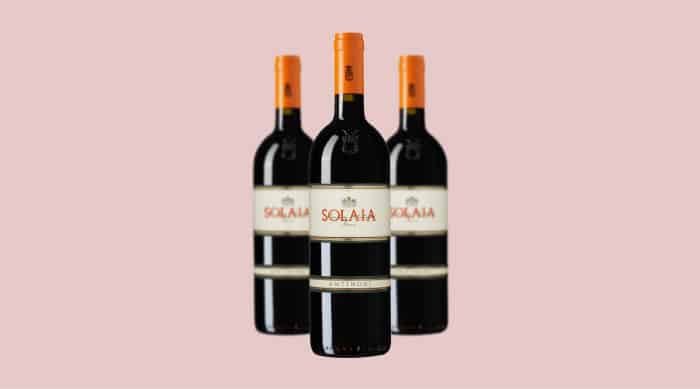
The famous Tuscan winemaker Antinori produces renowned wines like Solaia, Tignanello and Guado al Tasso.
Taste: The 2015 vintage has a rich, intense, sweet nose and flavors of anise, blackberries, vanilla, dark fruits, spices and licorice. This is a layered wine with fresh acidity, ripe tannins and long finish.
Average price Marchesi Antinori Solaia Toscana IGT 2015: $300+
9. Chateau Rayas Chateauneuf du Pape Reserve 2008 (France)

Chateau Rayas owns 12 hectares of vines in Chateauneuf du Pape. It’s well-known for its powerful, full bodied wines made predominantly from Grenache, Syrah and Mourvèdre.
Taste: The 2008 vintage is stony on the nose with minerals and offers plenty of acidity. Flavors feature sarsaparilla soda, red fruits, with a herbal and green olive tone. It’s a medium-bodied, dry red wine with a long finish.
Average price Chateau Rayas Chateauneuf du Pape Reserve 2008: $600+
For further reading, check out some of the best wine brands in the world, and some of the best French wines you should get hold of.
How to Buy Red Wine
There are plenty of ways to buy red wine. The simplest is to visit your local wine merchant.
You could also check out online wine sellers, wine auctions or wine brokers, especially for the rarer wines.
However, in most cases, you’d have to do the market research yourself to find the best red wine bottles to buy and the best prices.
Besides making sure your wine bottle is authentic, you’ll also have to take care of insurance, shipping, and the perfect storage solution if you don’t have the proper wine storage already!
Thankfully, there’s a much easier way to buy red wines!
Buy the Best Red Wines through Vinovest
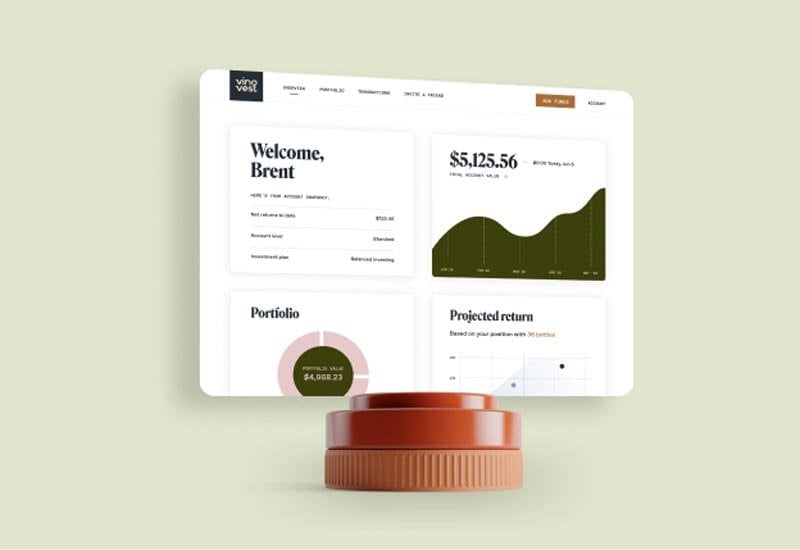
Vinovestis an online wine investment platform that allows you to purchase wines for drinking and for long term investing. Vinovest helps you choose, buy, sell, authenticate, and store your red wines, an Asti Spumante or a Montrachet wine for the long term.
Better still - Vinovest delivers your Shiraz, Nebbiolo, or any other bottle from your portfolio to you whenever you wish to take a sip of it.
How it works
All you need to do is to follow these four steps:
- Sign up
- Answer a brief questionnaire on your investment preferences and risk appetite.
- Add a minimum of $1,000 to your account.
- Track your fine wine portfolio online and watch it grow!
Benefits of Buying Red Wines through Vinovest
Here's why you should use Vinovest to buy, store and sell your fine wines.
Easy buying and selling
You can buy and sell wine from anywhere in the world, from Chile to China, with just a few clicks on Vinovest’s Artificial Intelligence (AI) based online platform.
Best prices
Vinovest helps you buy wines at the best wholesale prices directly from global wine exchanges, winemakers and merchants.
Provenance and authenticity
Counterfeit bottles are a common problem these days. But Vinovest authenticates every single bottle and checks its provenance, before you choose to buy them.
Curated portfolio
Vinovest’s professional team of Sommeliers and data scientists help curate your red wine portfolio with proprietary financial models based on historical data. Access your wine portfolio online at any time.
Optimal storage
Your wines are kept safely in bonded warehouses, under perfect conditions of light, humidity, vibration, and temperature.
Insurance
Vinovest keeps your wines safe under the eyes of security cameras. And what happens if the primary method fails? Power back-ups will guarantee the perfect climate control.
Vinovest has a comprehensive insurance policy to protect your wine cellar, so you know your wines are safe always.
Access to a global network
You’ll have access to new vineyards, private winery sales, and limited releases of rare wines through Vinovest’s extensive global network.
Ownership
Every single wine you buy through Vinovest belongs to you, be it a Bello Napa Valley Chardonnay, a Cotes du Rhone wine, or an Australian Mentor Cabernet Sauvignon.
Easy delivery
Want to uncork that Pinot Noir in your portfolio? No problem. Vinovest can have your wines safely shipped to you (or to your buyer if you choose to sell it.)
Conclusion
You’ll find hundreds of red wines from different parts of the world - some of which you can uncork right away to celebrate an occasion. Some others can be cellared for years to be sold at attractive prices!
But, researching and buying them on your own is a complicated process - no guarantee that you’ll get authentic bottles at the right prices! Also, finding ways to store and sell them just makes the process more complex.
Vinovest makes this entire process hassle-free for you.
Ready to build your collection with some of the best red wines in the world? Sign up now, and build your portfolio right away!
